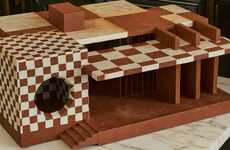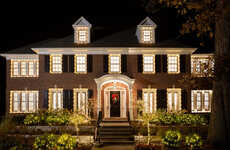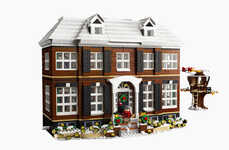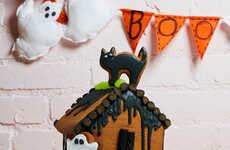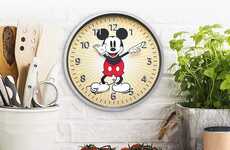
Disney+ Recreated an Edible Version of the Home Alone House
Laura McQuarrie — December 9, 2020 — Lifestyle
References: famouscampaigns
This holiday season, Disney+ commissioned award-winning artist and cake designer Michelle Wibowo to recreate the Home Alone house in gingerbread to mark the 30th anniversary of the classic holiday movie. The place where all the action in Home Alone takes place was faithfully recreated entirely with edible ingredients.
The process of creating the gingerbread house began with studying the architecture of the McCallister family home, then creating sketches of the features of the Chiaco family home. In all, over 300 hours went into creating the festive gingerbread house and fans will delight in every detail from the snow-capped roof to the gingerbread version of Kevin himself that can be seen in the snow. There's also Kevin's treehouse and many of the props that were used to set traps for the burglars.
Image Credit: Disney+
The process of creating the gingerbread house began with studying the architecture of the McCallister family home, then creating sketches of the features of the Chiaco family home. In all, over 300 hours went into creating the festive gingerbread house and fans will delight in every detail from the snow-capped roof to the gingerbread version of Kevin himself that can be seen in the snow. There's also Kevin's treehouse and many of the props that were used to set traps for the burglars.
Image Credit: Disney+
Trend Themes
1. Edible Architecture - The trend of recreating famous buildings or structures with edible ingredients opens up opportunities for innovative culinary experiences and interactive dining.
2. Festive Food Art - Creating intricate and visually captivating edible art pieces for holiday celebrations introduces the potential for unique culinary collaborations and immersive dining experiences.
3. Nostalgic Culinary Tributes - Recreating iconic movie scenes or settings through edible creations taps into consumers' nostalgia, offering opportunities for creative marketing campaigns and limited-edition culinary collaborations.
Industry Implications
1. Culinary Arts and Hospitality - The culinary arts and hospitality industry can explore the trend of edible architecture by incorporating it into menu designs, special events, and food-themed attractions.
2. Entertainment and Media - The entertainment and media industry can collaborate with renowned artists to create festive food art to promote movies, TV shows, or special holiday events, enhancing fan engagement and creating unique marketing opportunities.
3. Event Planning and Design - Event planning and design professionals can offer nostalgic culinary tributes as part of their services, creating immersive experiences and themed events based on iconic movies or cultural references.
2
Score
Popularity
Activity
Freshness


